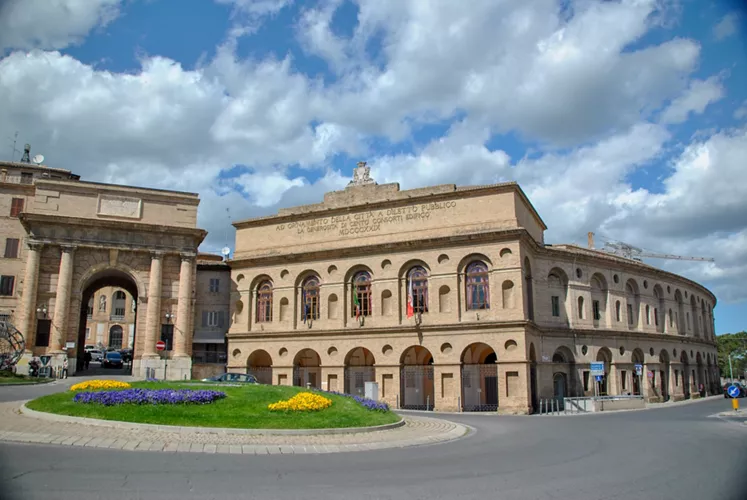This content was automatically translated. View the original text.

Overview
The events linked to the origins of Macerata tell the tale of the arduous origins of a city now surrounded by peaceful, fertile countryside. The city of Macerata was founded by refugees fleeing the destruction of the Roman settlement Helvia Rìcina. It became a municipality in 1138 and an episcopal see in 1320. During the last two decades of the 16th century, Macerata's fame spread beyond the borders of Italy to China, when the learned priest Matteo Ricci left his native city to embark on missions in the Far East, becoming the first member of his religious order to be accepted at the Ming imperial court. Ricci, a Jesuit, had a huge influence on China. By the time of his death in Beijing in 1610, there were 300 Christian churches in China. In the meantime, Ricci's native city had begun to acquire the genteel, measured dignity for which it is still known today. The historic centre is entirely surrounded by the city walls, which were built during the 15th and 16th centuries and still virtually intact, giving Macerata the characteristic charm typical of Italian provincial cities. Macerata has its own opera and theatre season and is also a thriving university town: as genteel and peaceful as the city may appear, it's anything but dull!
The sober elegance of the city centre opens onto the marvellous neoclassical Sferisterio, an open-air stadium built for the ancient ball game "pallone a bracciale”, which is now a venue for operatic performances and international events. Strolling through the city centre, you can admire historic buildings and churches in the Mannerist and Baroque styles, in the area around Piazza della Libertà. The four sides of the piazza bear signs of the city's refinement, with the City Hall, the 16th-century Apostolic Palace (now housing the Prefecture), the Civic Tower with its astronomical clock, the "Loggia dei Mercanti" (Merchants' Lodge) and Palazzo Ricci, with its 20th-century art collection featuring works by artists including Medardo Rosso, Balla, Boccioni, De Chirico and Burri, to name a few. On the same square, next to the Church of San Paolo, is an imposing archway marking the entrance to the University, one of the oldest in the world. Its academic faculties, one following another in via Don Minzoni since 1540, form a city within the city. Via Don Minzoni is also where you will find the beautiful Palazzo Buonaccorsi, home to the public museums with their collections of historic art, modern art, and the Carriage Museum. Here you can also admire the splendid frescoed vault of the Aeneid Hall, and don't miss Tintoretto's famous "Adoration of the Magi", which once embellished the beautiful church of Santa Maria delle Vergini, with its tapering octagonal dome, located about 2 km from Porta Picena. And the food? The fabulous flavours of the local produce are just waiting to be discovered.
62100 Macerata MC, Italia